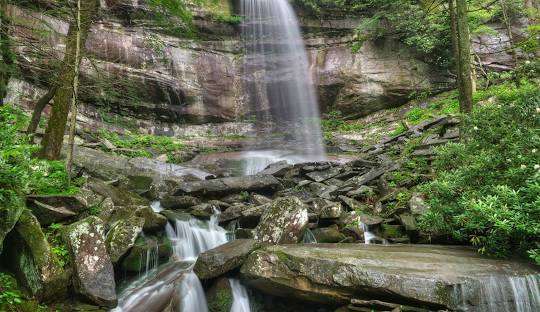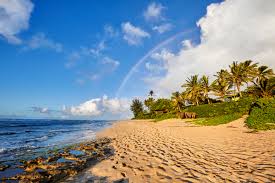Unforgettable Hawaii Visit: Exploring the Beauty and Culture of the Islands
Exploring the Beauty of Hawaii: A Must-Visit Destination
Hawaii, with its stunning landscapes, rich culture, and warm hospitality, is a destination that captivates visitors from around the world. From the lush rainforests and cascading waterfalls to the pristine beaches and vibrant marine life, Hawaii offers a diverse range of experiences for travelers seeking adventure, relaxation, and cultural immersion.
One of the highlights of a visit to Hawaii is exploring its unique volcanic landscapes. The islands are home to some of the most active volcanoes in the world, providing visitors with the opportunity to witness the raw power of nature up close. Whether hiking through lava fields or taking a helicopter tour over volcanic craters, experiencing Hawaii’s volcanic activity is truly awe-inspiring.
In addition to its natural beauty, Hawaii boasts a rich cultural heritage that is deeply rooted in Polynesian traditions. Visitors can attend traditional hula performances, participate in lei-making workshops, and sample authentic Hawaiian cuisine at local luau celebrations. Immerse yourself in the spirit of aloha as you learn about the history and customs that shape Hawaiian society.
No visit to Hawaii would be complete without spending time on its world-famous beaches. Whether you prefer relaxing on white sandy shores or trying your hand at surfing on legendary waves, Hawaii offers endless opportunities for beach lovers to soak up the sun and enjoy the crystal-clear waters of the Pacific Ocean.
As you plan your trip to Hawaii, be sure to explore each island’s unique attractions—from Oahu’s bustling city life and historic sites to Maui’s scenic road to Hana and Big Island’s diverse ecosystems. With its unparalleled beauty and welcoming spirit, Hawaii promises an unforgettable experience for all who venture to its shores.
Come discover why Hawaii is truly a paradise on earth—a destination that will leave you enchanted with its natural wonders and cultural treasures.
9 Essential Tips for an Unforgettable Hawaii Experience
- Respect the local culture and traditions
- Pack sunscreen and stay hydrated to protect against strong sun
- Try traditional Hawaiian cuisine like poi, poke, and shave ice
- Explore the beautiful beaches for swimming, snorkeling, and surfing
- Visit Volcanoes National Park to see active volcanoes and lava flows
- Attend a luau for a taste of Hawaiian music, dance, and food
- Take a helicopter tour to see stunning aerial views of the islands
- Shop for unique souvenirs like handmade leis or local artwork
- Learn about Hawaii’s history by visiting historical sites and museums
Respect the local culture and traditions
When visiting Hawaii, it is essential to respect the local culture and traditions. Embracing the spirit of aloha, which encompasses love, respect, and kindness, is key to experiencing the true essence of the islands. By learning about Hawaiian customs, participating in cultural activities, and showing reverence for sacred sites, visitors can forge meaningful connections with the local community and gain a deeper appreciation for the rich heritage that defines Hawaii. Remembering to honor and uphold traditional practices not only enriches your travel experience but also demonstrates your respect for the land and its people.
Pack sunscreen and stay hydrated to protect against strong sun
When visiting Hawaii, it is essential to pack sunscreen and stay hydrated to protect yourself against the strong sun. The tropical climate of Hawaii can lead to intense sun exposure, making sunscreen a crucial item to prevent sunburn and skin damage. Additionally, staying hydrated is important to combat the heat and humidity, ensuring that you can fully enjoy your time exploring the beautiful beaches and landscapes of Hawaii while keeping yourself safe and comfortable under the bright island sun.
Try traditional Hawaiian cuisine like poi, poke, and shave ice
When visiting Hawaii, be sure to immerse yourself in the local culture by trying traditional Hawaiian cuisine like poi, poke, and shave ice. Poi, a staple of the Hawaiian diet made from mashed taro root, offers a unique taste of the islands’ indigenous flavors. Sample fresh poke, a delicious dish of marinated raw fish often served with rice or seaweed, for a true taste of Hawaii’s culinary heritage. And don’t forget to cool off with a refreshing shave ice—a popular treat made from finely shaved ice topped with flavored syrups. Exploring Hawaii through its traditional foods is a delightful way to experience the rich and diverse flavors of this tropical paradise.
Explore the beautiful beaches for swimming, snorkeling, and surfing
When visiting Hawaii, be sure to explore the beautiful beaches that offer opportunities for swimming, snorkeling, and surfing. The crystal-clear waters and sandy shores provide the perfect setting for water activities that allow you to immerse yourself in the natural beauty of the islands. Whether you’re looking to relax with a leisurely swim, discover vibrant marine life while snorkeling, or catch some waves while surfing, Hawaii’s beaches offer something for everyone to enjoy under the warm Hawaiian sun.
Visit Volcanoes National Park to see active volcanoes and lava flows
Visiting Volcanoes National Park in Hawaii is a must for those seeking an unforgettable experience. Here, you can witness the incredible power of nature up close as you observe active volcanoes and mesmerizing lava flows. It’s a rare opportunity to see the Earth’s geothermal forces in action, making it a truly awe-inspiring and educational adventure for visitors of all ages.
Attend a luau for a taste of Hawaiian music, dance, and food
Immerse yourself in the vibrant culture of Hawaii by attending a traditional luau during your visit. A luau offers a delightful experience filled with authentic Hawaiian music, mesmerizing dance performances, and delicious local cuisine. From the rhythmic beats of the drums to the graceful movements of hula dancers, a luau showcases the rich heritage and spirit of aloha that defines Hawaiian culture. Indulge in a feast of traditional dishes such as kalua pig, poi, and haupia while enjoying the warm hospitality and entertainment that make a luau an essential part of any Hawaiian adventure.
Take a helicopter tour to see stunning aerial views of the islands
For a truly unforgettable experience during your visit to Hawaii, consider taking a helicopter tour to witness breathtaking aerial views of the islands. From high above, you can marvel at the lush landscapes, cascading waterfalls, volcanic craters, and turquoise waters that make Hawaii a paradise on earth. The unique perspective offered by a helicopter tour allows you to appreciate the beauty and diversity of the islands in a way that ground-level exploration simply cannot match. Soar through the skies and immerse yourself in the stunning natural wonders of Hawaii for a once-in-a-lifetime adventure.
Shop for unique souvenirs like handmade leis or local artwork
When visiting Hawaii, be sure to explore the local shops and markets to shop for unique souvenirs that capture the essence of the islands. Consider purchasing handmade leis crafted with vibrant flowers or intricate local artwork that reflects the beauty and culture of Hawaii. These one-of-a-kind treasures not only make for memorable keepsakes but also support local artisans and showcase the artistic talents of the community. Shopping for authentic souvenirs like these adds a special touch to your Hawaiian experience and allows you to bring a piece of paradise home with you.
Learn about Hawaii’s history by visiting historical sites and museums
Immerse yourself in Hawaii’s rich history by exploring its historical sites and museums. From ancient Hawaiian temples and royal palaces to museums showcasing the islands’ diverse cultural heritage, delving into Hawaii’s past provides a deeper appreciation for the traditions and stories that have shaped this unique destination. By visiting these sites, you can gain insight into the fascinating history of Hawaii and its people, making your visit a truly enriching experience.







